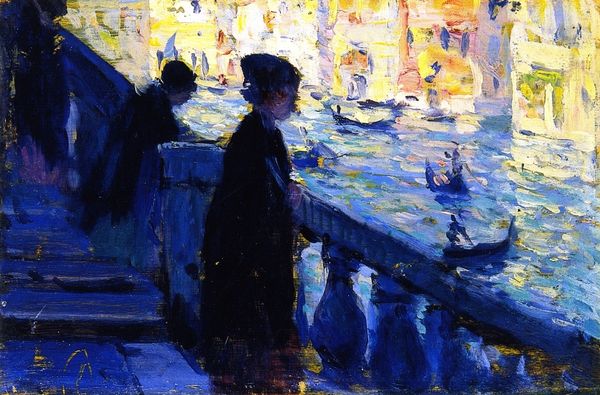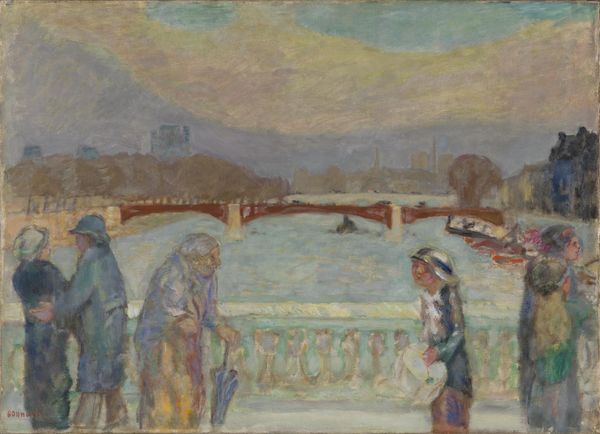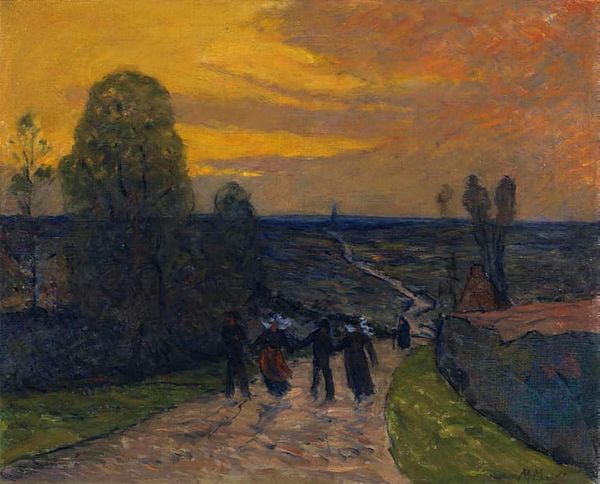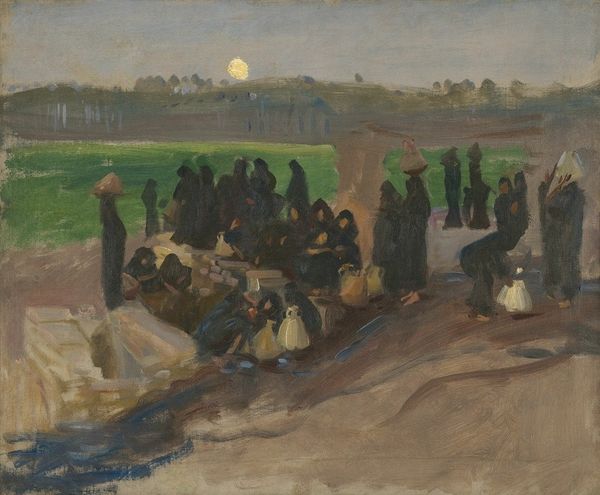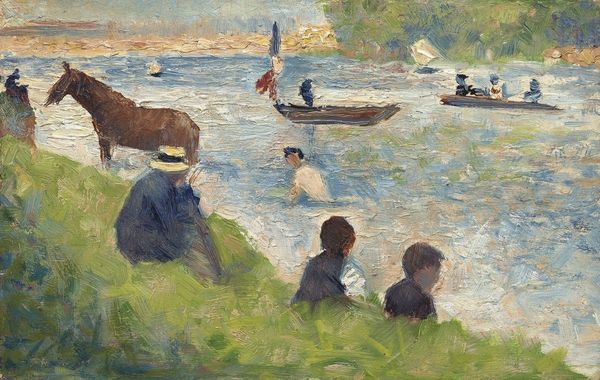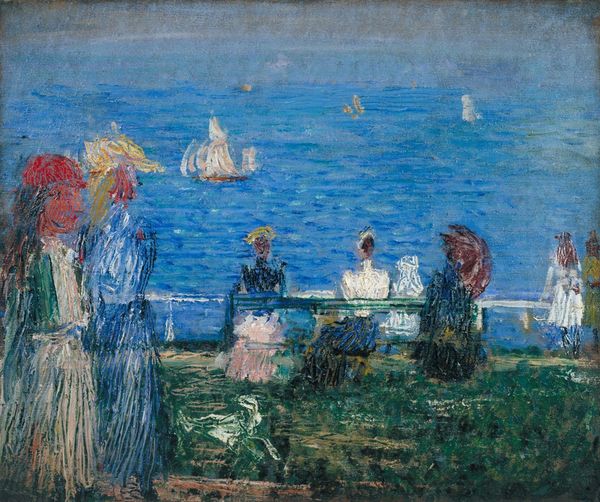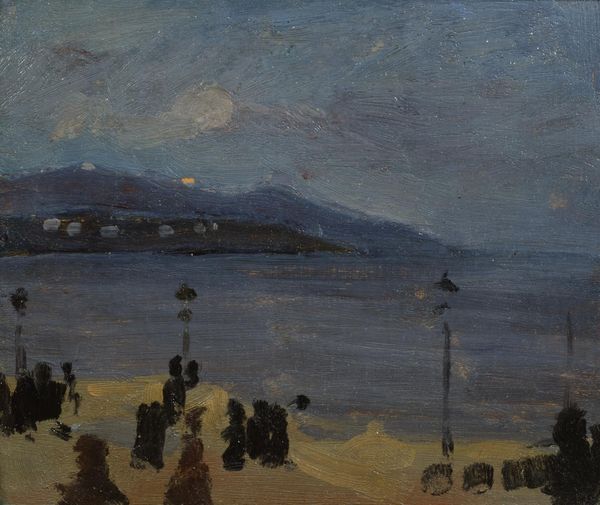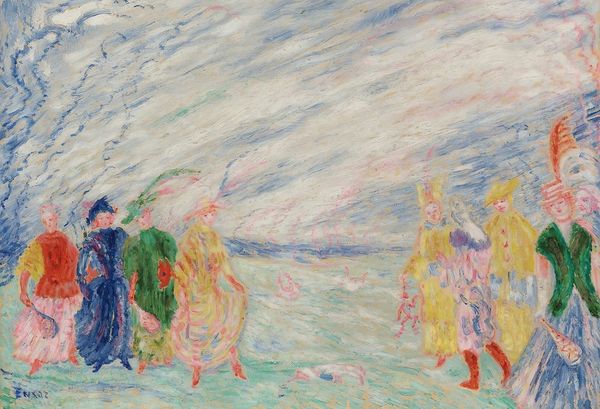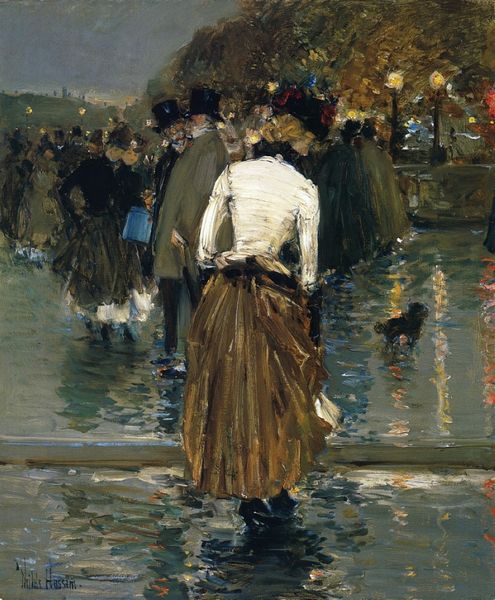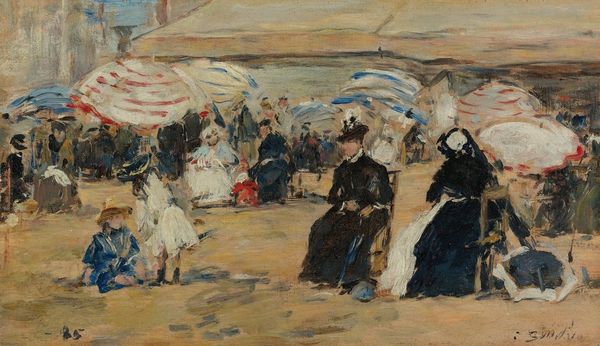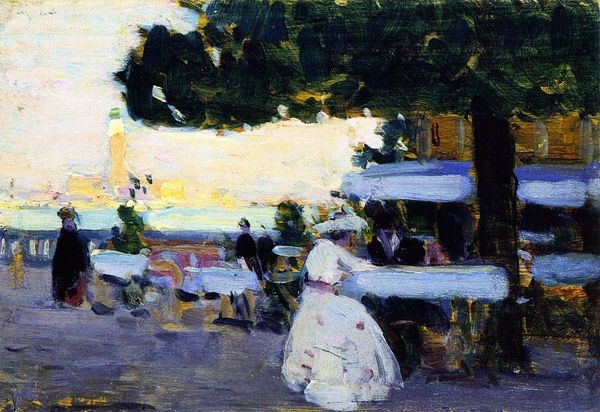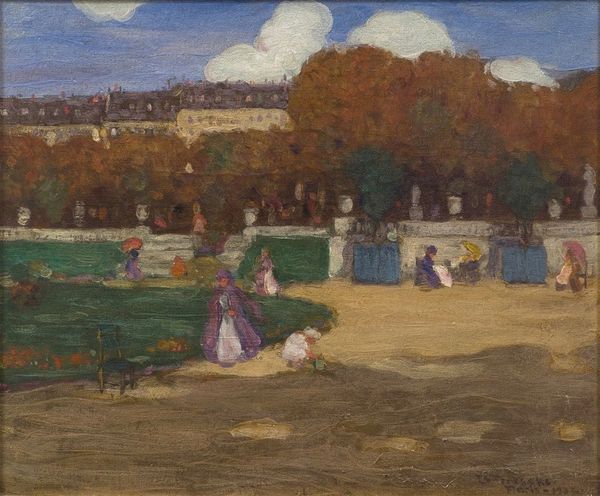
painting, oil-paint
#
painting
#
impressionism
#
oil-paint
#
landscape
#
painted
#
figuration
#
oil painting
#
water
#
cityscape
#
genre-painting
Copyright: Public domain
Editor: We are looking at "On the Bridge," an oil painting from 1888 by Georg Pauli. I find the muted colors quite captivating, almost dreamlike, and I'm curious about how he captured this hazy scene. What do you see in this piece from a formal perspective? Curator: Immediately, I'm drawn to the arrangement of forms and the distribution of light. Notice how Pauli orchestrates depth. The bridge's edge and figures occupy the foreground. The receding lines of the bridge then create a plane for secondary figures to sit. Lastly, the diffuse lighting of the distant cityscape pushes the viewer's gaze further into the painting. Editor: That makes sense. The light does seem to blur the background, creating a soft atmospheric perspective. Curator: Precisely. Pauli employs short brushstrokes and a limited palette, emphasizing tone rather than precise detail. Consider the tactile quality of the paint itself – how the visible brushwork contributes to the painting's overall texture. It gives a feeling of movement despite the stillness of the figures. What strikes you about the use of these formal tools? Editor: The texture does create a kind of energy. The blurry city lights against the more defined figures, brings the focus back to the subjects. It also makes the dark colour palette more vibrant than if it were realistically rendered. Curator: An excellent point. Color and form interact to structure our viewing experience. Consider, for instance, how the composition encourages one to linger on the arrangement of light and dark, instead of historical context, for example. Editor: Thank you for highlighting the interplay of brushstroke and light in shaping our interpretation of Pauli's work! Curator: My pleasure. Reflecting on this further has been quite illuminating.
Comments
No comments
Be the first to comment and join the conversation on the ultimate creative platform.
